-
About
- About Listly
- Community & Support
- Howto
- Chrome Extension
- Bookmarklet
- WordPress Plugin
- Listly Premium
- Privacy
- Terms
- DMCA Copyright
- © 2010-2025 Boomy Labs

Listly by Umbrella Health Care Systems
Chronic obstructive pulmonary disease (COPD) is a type of progressive lung disease characterized by long-term respiratory symptoms and airflow limitation. The main symptoms include shortness of breath and a cough, which may or may not produce mucus.[4] COPD progressively worsens, with everyday activities such as walking or dressing becoming difficult.[3] While COPD is incurable, it is preventable and treatable.
The two most common conditions of COPD are emphysema and chronic bronchitis and they have been the two classic COPD phenotypes. Emphysema is defined as enlarged airspaces (alveoli) whose walls have broken down resulting in permanent damage to the lung tissue. Chronic bronchitis is defined as a productive cough that is present for at least three months each year for two years. Both of these conditions can exist without airflow limitation when they are not classed as COPD. Emphysema is just one of the structural abnormalities that can limit airflow and can exist without airflow limitation in a significant number of people. Chronic bronchitis does not always result in airflow limitation but in young adults who smoke the risk of developing COPD is high.Many definitions of COPD in the past included emphysema and chronic bronchitis, but these have never been included in GOLD report definitions. Emphysema and chronic bronchitis remain the predominant phenotypes of COPD but there is often overlap between them and a number of other phenotypes have also been described.
The most common cause of COPD is tobacco smoking. Other risk factors include indoor and outdoor air pollution including dust, exposure to occupational irritants such as dust from grains, cadmium dust or fumes, and genetics, such as alpha-1 antitrypsin deficiency . In developing countries, common sources of indoor air pollution are the use of coal and biomass such as wood and dry dung as fuel for cooking and heating.[16]Most people living in European cities are exposed to damaging levels of air pollution.The diagnosis is based on poor airflow as measured by spirometry.
Most cases of COPD can be prevented by reducing exposure to risk factors such as smoking and indoor and outdoor pollutants.[18] While treatment can slow worsening, there is no conclusive evidence that any medications can change the long-term decline in lung function.COPD treatments include smoking cessation, vaccinations, pulmonary rehabilitation, inhaled bronchodilators and corticosteroids.Some people may benefit from long-term oxygen therapy, lung volume reduction and lung transplantation.In those who have periods of acute worsening, increased use of medications, antibiotics, corticosteroids and hospitalization may be needed.
As of 2015, COPD affected about 174.5 million people (2.4% of the global population). It typically occurs in males and females over the age of 35–40.In 2019 it caused 3.2 million deaths, 80% occurring in lower and middle income countries,up from 2.4 million deaths in 1990.The number of deaths is projected to increase further because of continued exposure to risk factors and an aging population.In the United States in 2010 the economic cost was put at US$32.1 billion and projected to rise to US$49 billion in 2020. In the United Kingdom this cost is estimated at £3.8 billion annually.
https://www.umbrellamd.com/e-visit
Source: https://www.umbrellamd.blog/
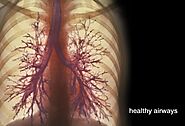
COPD, or chronic obstructive pulmonary disease, is a lung disorder that makes it hard to breathe. The first symptoms can be so mild that people mistakenly chalk them up to "getting old." People with COPD may develop chronic bronchitis, emphysema, or both. COPD tends to get worse over time, but catching it early, along with good care, can help many people stay active and may slow the disease.
https://www.umbrellamd.com/e-visit
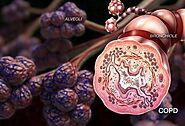
Inside the lungs, COPD can clog the airways and damage the tiny, balloon-like sacs (alveoli) that absorb oxygen. These changes can cause the following symptoms:
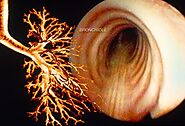
This condition is the main problem for some people with COPD. Its calling card is a nagging cough with plenty of mucus (phlegm). Inside the lungs, the small airways have swollen walls, constant oozing of mucus, and scarring. Trapped mucus can block airflow and become a breeding ground for germs. A "smoker's cough" is typically a sign of chronic bronchitis. The cough is often worse in the morning and in damp, cold weather.
https://www.umbrellamd.com/e-visit

First, your doctor will listen to your chest as you breathe, then will ask about your smoking history and whether you have a family history of COPD. The amount of oxygen in your blood may be measured with a blood test or a pulse oximeter, a painless device that clips to a finger.
https://www.umbrellamd.com/e-visit
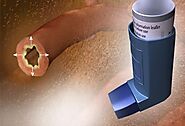
Bronchodilators are medications that relax the muscles of the airways to help keep them open and make it easier to breathe. Anticholinergics, a type of bronchodilator, are often used by people with COPD. Short-acting bronchodilators last about four to six hours and are used on an as-needed basis. Longer-acting bronchodilators can be used every day for people with more persistent symptoms. People with COPD may use both types of bronchodilators.
https://www.umbrellamd.com/e-visit
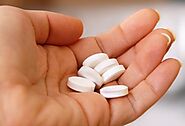
If bronchodilators don't provide enough relief, people with COPD may take corticosteroids. These are usually taken by inhaler. They may reduce inflammation in the airways. Steroids may also be given by pill or injection to treat flare-ups of COPD.
https://www.umbrellamd.com/e-visit

Walking is one of the best things you can do if you have COPD. Start with just five or 10 minutes at a time, three to five days a week. If you can walk without stopping to rest, add another minute or two. Even if you have severe COPD, you may be able to reach 30 minutes of walking at a time. Use your oxygen while exercising if you are on oxygen therapy. Discuss your exercise plans with your doctor.
https://www.umbrellamd.com/e-visit

About 90% of people with COPD are current or former smokers -- and their disease usually appears after age 40. Secondhand smoke and exposure to environmental irritants and pollution also can increase your risk of COPD. In rare cases, the DNA passed down through a family can lead to COPD, even in "never smokers." One of these genetic conditions is called Alpha-1 Antitrypsin (AAT) deficiency.
https://www.umbrellamd.com/e-visit

Umbrella Health Care Systems provide complete solution for health related problems.
https://www.umbrellamd.com/